#roman antioch
Text
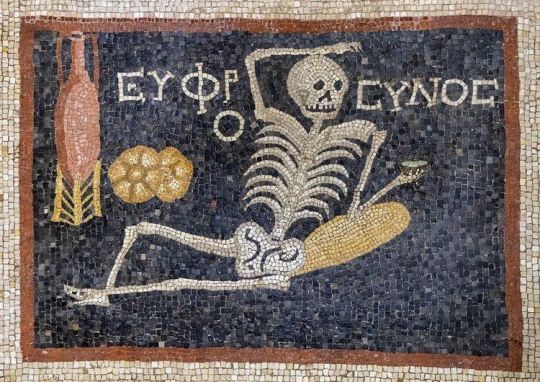
One of the panels of a mosaic of a cheery skeleton uncovered in Turkey in 2016, probably dated to the Late Roman era Antioch. The word can be transliterated as EUPHROSYNOS (cheerful).
#ancient rome#roman empire#ancient history#antioch#skeleton#mosaic#roman era#roman antioch#ancient art#ancient civilisation#ancient civilisations#ancient culture#memento mori
1K notes
·
View notes
Text
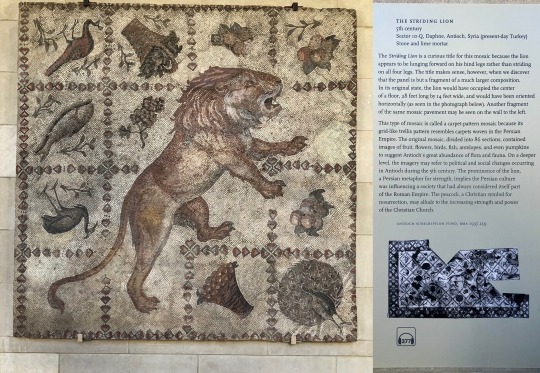
The Striding Lion
Sector 10-Q, Daphne, Antioch, Syria (present-day Turkey), 5th c.
Stone & lime mortar mosaic
Baltimore Museum of Art display
“The Striding Lion is a curious title for this mosaic because the lion appears to be lunging forward on his hind legs rather than striding on all four legs. The title makes sense, however, when we discover that the panel is but a fragment of a much larger composition. In its original state, the lion would have occupied the center of a floor, 28 feet long by 14 feet wide, and would have been oriented horizontally (as seen in the photograph below). Another fragment of the same mosaic pavement may be seen on the wall to the left.
This type of mosaic is called a carpet-pattern mosaic because its grid-like trellis pattern resembles carpets woven in the Persian Empire. The original mosaic, divided into 86 sections, contained images of fruit, flowers, birds, fish, antelopes, and even pumpkins to suggest Antioch's great abundance of flora and fauna. On a deeper level, the imagery may refer to political and social changes occurring in Antioch during the 5th century. The prominence of the lion, a Persian metaphor for strength, implies the Persian culture was influencing a society that had always considered itself part of the Roman Empire. The peacock, a Christian symbol for resurrection, may allude to the increasing strength and power of the Christian Church.”
#animals in art#ancient art#Roman art#Antioch#mosaic#lion#feline#carpet pattern mosaic#Baltimore Museum of Art#World Lion Day#animal holiday#museum visit
21 notes
·
View notes
Text

Mosaic with Erotes Fishing
The mosaic, once part of a floor decoration, was excavated in Antioch, a city in Ancient Anatolia, modern-day Syria. It dates back to the Late Roman period, 2nd or 3rd century CE.
Source: 🏺
10 notes
·
View notes
Text

By Jean-Pierre Isbouts
1 December 2022
After Jesus' death in A.D. 33, his early followers began slowly spreading out from Jerusalem to find sanctuary in places such as Cyrus, Phoenicia, Damascus, and Antioch.
The authors of the New Testament, like St. Luke the Evangelist who is believed to have penned the book Acts of the Apostles around A.D. 80, tell the struggles believers and the early church faced in their nascent days.
In Acts, Luke tells the story of St. Stephen, the first Christian martyr to be gruesomely executed in A.D. 36.
Stephen's stoning, Luke says, prompted other followers to flee so as not to fall victim to similar persecutions.
So, what does the Bible say about how this vulnerable faith got jumpstarted, eventually evolving into the world’s most populous religion with some 2.3 billion followers today?
Mystical conversion
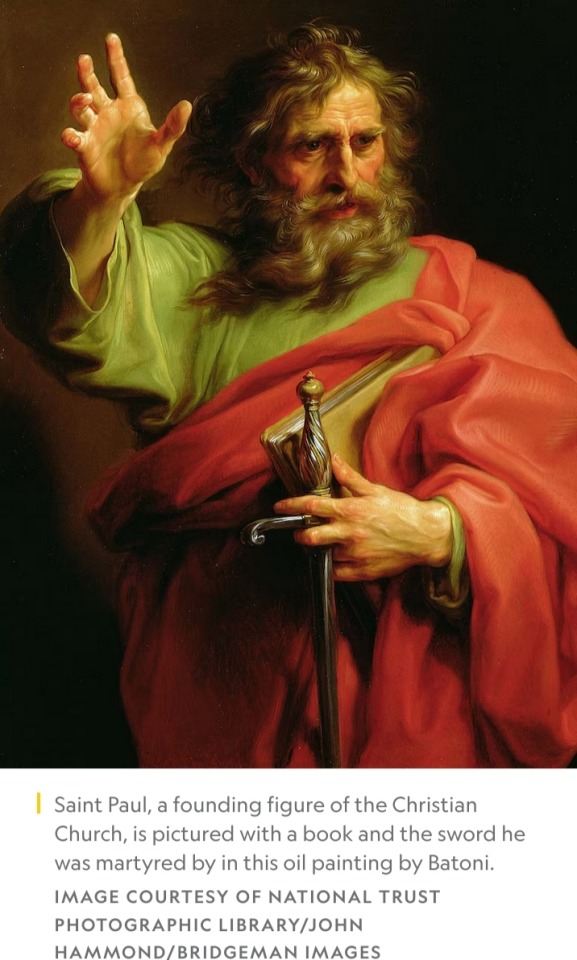
Acts of the Apostles tells the story of one man, Saul of Tarsus, who played a huge role in spreading early Christianity.
Devoutly Jewish and a Roman citizen, he was an unlikely proponent of this new faith.
It describes how he witnessed the mob scene around Stephen’s death and came to believe it was his solemn duty to persecute Christians, going so far as to drag Christian men and women to prison, punishing them to deny their faith.
He obtained permission from the high priest in Jerusalem to pursue and arrest fleeing Christians.
On his way to Damascus, Syria, however, a light from heaven flashed around him.
He fell to the ground and heard the voice of the resurrected Jesus saying, “Saul, why do you persecute me?” (Acts 9:4).
From that moment on, Saul (later called Paul) devoted himself to the Apostolic mission.
Spreading the message
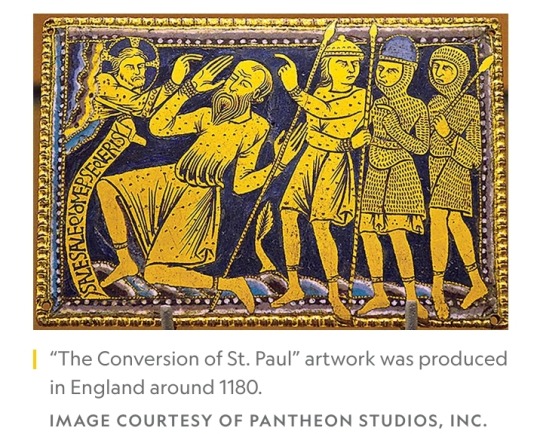
Among the places where early Christians fled for safety from persecution was Antioch, capital of Roman Syria.
The newly converted Paul found himself there and, with the apostle Barnabas, spent a year preaching the gospel and establishing the first Christian church.
It was there that the term “Christians” — "followers of Christ” — was coined (Acts 11:21).
It was also from Antioch that Paul embarked on three separate journeys, detailed in Acts, traveling over 10,000 miles between A.D. 46 and 57.
It tells of Paul’s visits to present-day Israel, Syria, Greece, and Turkey, walking roads that Romans built to facilitate control over the empire and enduring uncomfortable passages on weather-exposed decks of boats.
Along the way, he argued “persuasively about the kingdom of God” (Acts 19:8) and performed “extraordinary miracles” (Acts 19:11), such as curing the sick.
In Cyprus, he baptized a Roman consul, Paulus Sergius.
He shared Jesus’ gospel and established churches throughout the Roman Empire, communities of faith that featured confessions, liturgies, bishops, priests, and deacons.
Resistance, arrest, and martyrdom
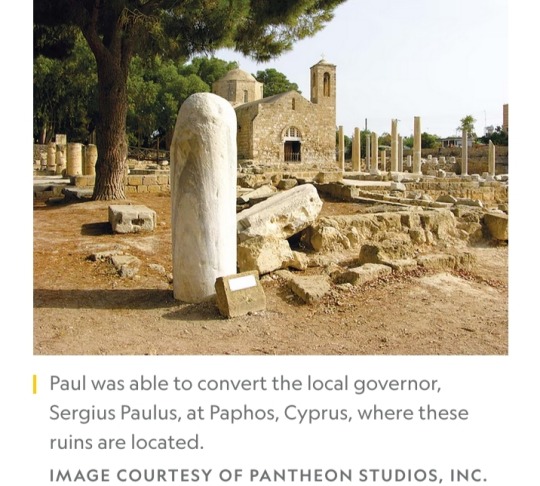
Everywhere he went, however, Paul also encountered Jewish followers, who called him a heretic.
He endured beatings, stoning, and arrests for preaching the gospel.
In Athens, Acts recounts how Paul became distressed over the preponderance of idols.
He tried to reason with the citizens:
“As I walked around and looked at your objects of worship, I even found an altar with this inscription: To an unknown god. So you are ignorant of the very thing you worship” (Acts 17:23).
He debated that this “unknown god” was the biblical God, the creator of heaven and earth.
Some sneered, but others said they wanted to hear more from Paul (Acts 17:32). Just by talking to people, he successfully made converts, one by one.
Acts records that Paul was arrested several times by the Romans and imprisoned twice in Rome.
The first time, between A.D. 60 and 62, he was arrested for causing a riot in a Jewish temple in Jerusalem.
He was allowed to live in a house, where it’s said he converted his Roman guards.
The Romans arrested him again sometime between A.D. 62 and 67.
This time, he was confined to Tullianum, a maximum security prison. Soon after, Paul is said to have been martyred.
His end is unclear, but the most common account claims he was beheaded at the order of the Roman emperor Nero, who blamed him as a Christian leader for Rome’s burning.
Paul’s unique ways
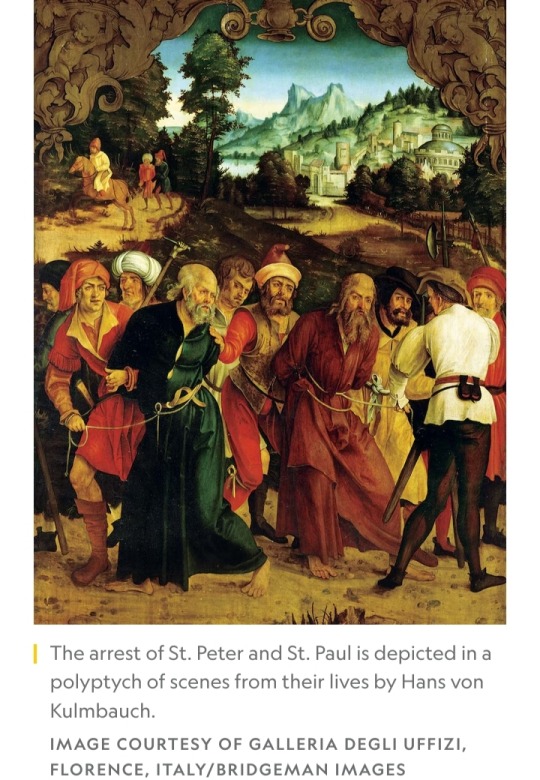
Many other apostles and missionaries evangelized Christianity at the same time as Paul.
While biblical accounts show that Paul didn't claim to be anything more than an ambassador for Christ, he did have a unique strategy.
He worked to baptize souls regardless of whether they were Jewish or Gentile.
One big question centered on whether converts to Christ should also be expected to become Jewish.
For the Jerusalem apostles, the answer was yes. For them, faith was inseparable from Jesus’ teachings as a Jewish rabbi. Paul disagreed.
He welcomed Gentiles who were attracted to Christianity but were not interested in adopting Jewish customs.
Paul was intelligent and controversial, pouring his experiences and thoughts into letters throughout his travels.
Some say he wrote so many letters because so many people argued with him.
Whatever the case, the letters summarize his views on Christianity, ideas that became the bedrock of the Catholic Church.

In his Letter to the Romans, for example, he said that faith in Christ supersedes Jewish Law; that each community is part of the “body of Christ” and should be governed by love; and that faith in the Christian God holds the promise of eternal life.
In all, he authored 13 epistles (seven of which are undisputedly his, six of which are disputed), making him the most prolific writer in the Bible.
Fourteen of the 27 books in the New Testament are attributed to him (though scholars also differ on this number).
Through it all, Paul articulated Jesus’ “kingdom of God” message into an idea that the largely Gentile population could understand and accept and his ability to spread the message of primitive Christianity is truly extraordinary.
His three journeys described in Acts permanently established the fledgling faith in Gentile lands and beyond.
Without him, the Greco-Roman world might never have heard about the teachings of a charismatic rabbi from Nazareth whose redemptive program went on to embrace the world.

#Saint Paul the Apostle#Christianity#Jesus#Jerusalem#Saint Luke the Evangelist#Acts of the Apostles#Saint Stephen#Saul of Tarsus#Christians#Antioch#Barnabas#Paulus Sergius#Roman Empire#Tullianum#Nero#Nazareth#faith#Holy Week 2024#Holy Week#Semana Santa#Good Friday#Catholic Church#conversion
1 note
·
View note
Text

Agora
* Antioch
* 2nd-4th century CE
* Worcester Art Museum, USA
source: Roman mosaics dating between 2nd and 4th centuries AD, excavated at Antioch, Turkey, in the 1930s; I took this photograph., Public domain, via Wikimedia Commons.
photo: probably by Daderot
#Agora#Antioch#Roman#mosaics#ancient#art#detail#2nd century CE#3rd century Ce#4th century CE#USA museums#hairstyle#personification
53 notes
·
View notes
Photo

Today we celebrate the memory of the Great Martyr Marina of Antioch. Saint Marina (also known as Margaret) was born to a Christian mother and pagan father, but her mother died when Marina was still young. Saint Marina was taught the Christian faith by her nursemaid, and later was disowned by her own father for being a Christian. During the fierce persecution of Emperor Diocletian, Saint Marina was imprisoned at only 15 years of age. Thanking the Lord for allowing her to suffer for Him, she went through innumerable torments, which the torturers themselves even had to look away. Having been healed from her wounds by an Angel, she was then nailed to a tree and burned, then thrown into a large cauldron of water to be drowned. This was granted to her by God as she prayed that she may be baptised in water before her death. When they plunged her into the water, there suddenly shone a light, and a snow-white dove came down from Heaven, bearing in its beak a golden crown. The fetters put upon Saint Marina came apart by themselves. The martyr stood up in the fount of Baptism glorifying the Holy Trinity, Father, Son, and Holy Spirit. She emerged from the fount completely healed, without any trace of burns. Amazed at this miracle, the people glorified the True God, and many came to believe. This brought the governor into a rage, and he gave orders to kill anyone who might confess the Name of Christ. 15,000 Christians perished there, and the holy Martyr Marina was beheaded. May the Holy Great Martyr Marina and those with her intercede for us always + #saint #marina #antioch #marinaofantioch #margaret #margaretofantioch #greatmartyr #martyr #great #christian #emperor #diocletian #rome #roman #martyrdom #holy #prayer #orthodox #saintoftheday (at Antioch, Turkey) https://www.instagram.com/p/CgFjQQvPqrx/?igshid=NGJjMDIxMWI=
#saint#marina#antioch#marinaofantioch#margaret#margaretofantioch#greatmartyr#martyr#great#christian#emperor#diocletian#rome#roman#martyrdom#holy#prayer#orthodox#saintoftheday
19 notes
·
View notes
Text

Roman Catholic Parish Church of St Margaret of Antioch
Römisch-katholische Pfarrkirche zur Hl. Margareta von Antiochia
Римско-католическая приходская церковь Святой Маргариты Антиохийской
Église paroissiale catholique romaine de Sainte-Marguerite d'Antioche
#Groß Gerungs#Гросгерунгс#Roman Catholic#parish church#St Margaret of Antioch#römisch-katholisch#Pfarrkirche#Hl. Margareta von Antiochia#римско-католический#церковь#Святая Маргарита Антиохийская#église paroissiale#catholique romaine#Sainte-Marguerite d'Antioche#winter#snow#зима#снег#Schnee#hiver#neige#Zwettl#Цветль#Waldviertel#Вальдфиртель#Lower Austria#Austria#Basse-Autriche#Autriche#Niederösterreich
3 notes
·
View notes
Note
Francis of Assisi
Tatiana of Rome
Margaret of Antioch
Perpetua and Felicity
St Francis is added, as are Margaret of Antioch and the absolute queens Perpetua and Felicity! As for Tatiana of Rome, this is the first nomination for her! You'll have to send in some propaganda to get more nominations!
#st francis of assisi#st tatiana of rome#st margaret of antioch#sts perpetua and felicity#st perpetua#st felicity#catholic#catholicism#roman catholicism#catholic saint tournament
0 notes
Text

The largest Roman mosaic floor, discovered in 2010, Ant𝚊k𝚢𝚊, Türkiye. Anciet city Antioch
Photos by Cemal Emden/Emre Arolat Arch

9,000 square meter mosaic with colorful geometries. It is the floor of a large Roman public building, damaged during an earthquake in the 6th century.
Antioch, former capital of the Seleucid Empire, was conquered by Rome in 63 BC.
672 notes
·
View notes
Text
One of the (many) reasons the Muslim world didn't try to put up a unified resistance to the First Crusade is because nobody but the Franks actually believed they were taking part in anything important. Arab and Turkish sources consistently refer to the crusaders as "the Romans" because everybody made the perfectly reasonable assumption that these were just Some Guys who the Byzantine emperor had dragged out of a hole somewhere to contest the rule of Antioch. It wasn't until the siege of Jerusalem started that people were like "Oh shit, these clowns are actually gonna try it."
19K notes
·
View notes
Text
Avicenna, Canute dies, Steve and Vladimir baptize,
Bulgar-Slayer, Brian Boru, Normans in Apulia
Guy d'Arezzo, Moorish art, Roman Church breaks apart
Holy Roman Empire peaks; hello, Crab Nebula
Comneni, Hauteville, Patarines, Bogomils
Bologna U, Canossa Walk, Genoa has a nice dock
Seljuk Turks, Vikings, England's got a French king
El Cid falls, Domesday Book, Crusaders in Antioch
We didn't make the Wheel turn
It was always spinning while we've all been sinning
We didn't make the Wheel turn
It's been hard to grapple since one plucked that Apple
#history#sorry#I just spent 2.5 hours straight on this#maybe I should have picked the 12th century instead of the 11th though#my work
296 notes
·
View notes
Text
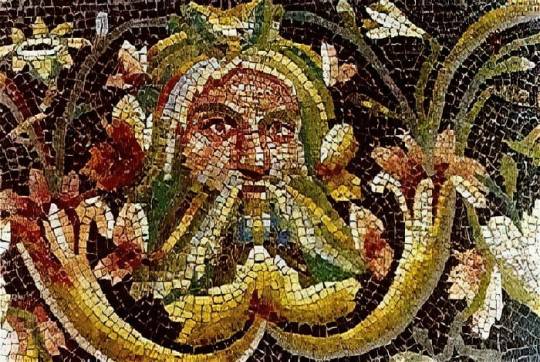
The Stunning Ancient Greek Mosaics of Zeugma
The ancient Greek mosaics of Zeugma in Turkey are true archaeological treasures that can still be admired at the Zeugma Mosaic Museum in Gaziantep, Turkey.
The 30,000-square-meter (320,000 square foot) museum, which opened its doors in September of 2011 is the largest mosaic museum in the world, containing 1,700 square meters (18,000 square feet) of ancient works of art.
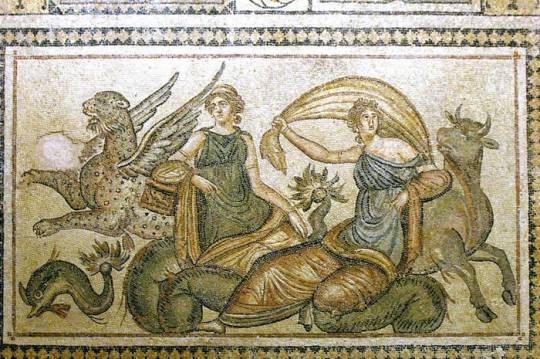
The museum focuses on the mosaics found in Zeugma, which was originally founded as Seleucia by Seleucus I Nicator, a general in Alexander the Great’s Army, in 305 BC.
After Alexander’s death, his generals divided his empire among themselves. Although Seleucus moved his main capital to Antioch, Seleucia became an important center of trade, Hellenistic culture, and regional government under the Seleucids.

The city was populated by Greeks, Syrians, and Jews. It was an affluent city with a population of eighty thousand and in the 2nd and 3rd century BC was of sufficient stature to be compared to another great center of Hellenism, Alexandria, in Egypt.
The Roman Empire’s forces conquered the city in 64 BC, renaming it Zeugma (meaning “bridge” or “crossing” in ancient Greek).
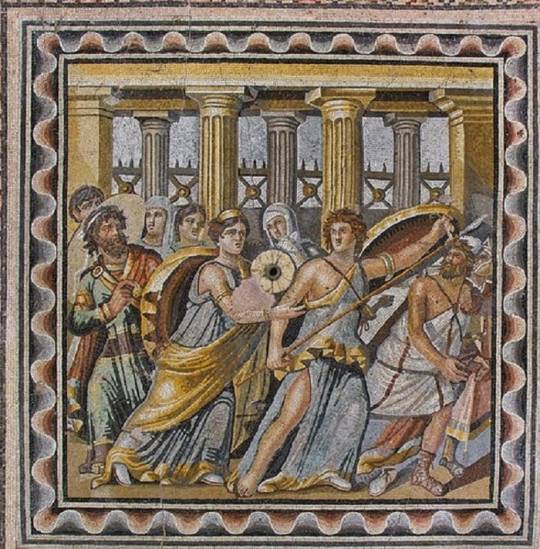
The Romans held Zeugma until 253 AD, when the Persian Sassanids conquered the city, putting a violent end to its most significant years.
The ancient Greek mosaics of Zeugma
The treasures of Zeugma, including its vaunted mosaics, remained relatively unknown until the year 2000. Zeugma is now eighty percent underwater after it was flooded with the waters of a nearby artificial lake.
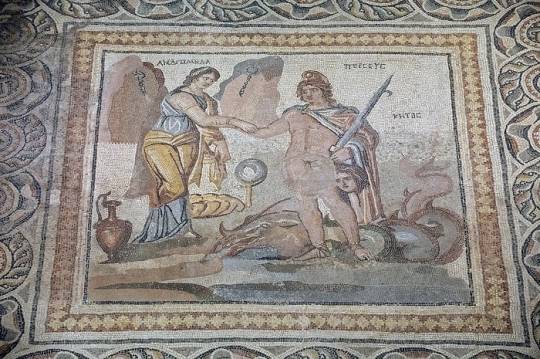
Archaeologists were alarmed at the flooding of the area and immediately began excavations to save the ancient treasures.
Most of the Greek mosaics of Zeugma, which were recovered in excellent condition, belong to the 2nd century BC preceding the Romans.

However, some of the mosaics appear to belong to the Roman era, as they depict Greek and Roman deities together.
In addition, some of the mosaics deviate from purely Hellenistic style and imagery, with archaeologists placing them in the Roman era of the city’s history.
The archaeological site of Zeugma
The archaeological site of Zeugma is a UNESCO World Heritage Center, located ten kilometers (six miles) away from Nizip within the boundaries of Gaziantep.
The preserved parts of the ancient city include the Hellenistic Agora, the Roman Agora, two sanctuaries, the stadium, the theater, two bathhouses, and the Roman legion military base.

Remains of the administrative structures of the Roman legion, the majority of the residential quarters, Hellenistic and Roman city walls, and the East, South and West necropolis can also be found there.
The archaeological site of Zeugma is of immense historical significance in the understanding of the ancient integration of Hellenistic and Semitic cultural spheres and the birth of syncretistic hybrid cultures in the region.
By Philip Chrysopoulos.
#The Stunning Ancient Greek Mosaics of Zeugma#Gaziantep Turkey#the largest mosaic museum in the world#Seleucus I Nicator#Alexander the Great#mosaic#ancient artifacts#archeology#archeolgst#history#history news#ancient history#ancient culture#ancient civilizations#roman history#greek history#greek art
145 notes
·
View notes
Text

Mosaic depicting a peacock from the city of Antioch, 3rd-4th century CE. Peacocks were a frequent subject of Roman artists; they represented spring and rebirth and were kept in the temples of Juno.
{WHF} {Ko-Fi} {Medium}
377 notes
·
View notes
Text

Gold ring with beryl intaglio of Tyche of Antioch, Roman, 1st-2nd century AD
from The Museum of Fine Arts, Boston
408 notes
·
View notes
Text

Saint Ignatius of Antioch
35-107
Feast Day: October 17 (New), February 1 (Trad)
Patronage: Against throat diseases, the Church in the Eastern Mediterranean and North Africa
Saint Ignatius of Antioch is one of the five "Apostolic Fathers," and was the third Bishop of Antioch. He was a disciple of St. John the Evangelist and is known for explaining Church theology. Ignatius was arrested by Roman soldiers and taken to Rome where he was sentenced to death at the Coliseum for his Christian teachings, practices and faith. On his way to being martyred in Rome, he wrote letters to the early Christians, which we still have today, that connect the Catholic Church to the early, unbroken, clear teaching of the Apostles given directly by Jesus Christ. He urged the Christians to remain faithful to God, warned them against heretical doctrine, and provided them with the solid truths of the faith.
Prints, plaques & holy cards available for purchase here: (website)
95 notes
·
View notes
Text
There's a million clues about how Lestat & Marius are similar characters, like father & son, and I wish so much that we had more content about Marius in his first couple centuries when he was still a fledgling. As much as VC assigned mortal age to your temperament, there's still some clues to Marius's emotional dysregulation in his years with Pandora, even leading to their breakup.
But he lapses into the same fits of despair as Lestat and struggles with his nature. I'm thinking about this part in B&G when he has to slaughter the first group of cultists and has a meltdown realizing this is what it's going to be like forever:
But though deeply touched by their mishmash of Christian and Persian ideas, of their wild notions, and by their curious appearance of innocence, I was also horrified by the fact that this was a new religion among the blood drinkers, and they spoke of other adherents. They spoke of a cult.
The human in me was revolted; and the rational Roman was more confused and alarmed than I can express.
It was Pandora who quickly brought me to my senses and gave me to know that we must slaughter the whole band. Were we to let them go, others would come to us, and soon the Mother and Father might fall into their hands.
I, who had slain old pagan blood drinkers with ease, seemed somehow unable to obey her, perhaps because I realized for the first time that if we remained in Antioch, if we maintained our household and our lives, more and more blood drinkers would come and there would be no end to killing them in order to protect our fine secret. And my soul suddenly could not endure this possibility. Indeed I thought once more of death for myself and even for Those Who Must Be Kept
We slaughtered the zealots. It was a simple thing to do for they were so young. It took only moments with torches and with our swords. We burnt them to ashes and then scattered those ashes as, I'm sure you know, must be done.
But after it was over, I lapsed into a terrible silence and for months would not leave the shrine. I abandoned Pandora for my own suffering.
I couldn't explain to her that I had foreseen a grim future, and when she had gone out to hunt the city or to do whatever amused her, I went to Akasha.
And as much as mortal age gives vampires perspective on humans, gives them perhaps more respect for mortality, gives them solid foundation for understanding the price of immortality, there's still something to be said by their literal age and how they've maybe ripened or calmed down. Lestat is absolutely a unique mess, but how will he mature in 2,000 years? It just makes me wonder about the overlap in their personalities, and how much will change and how much will stay the same, and if Marius is simply a little more chill because he's old as fuck. (There's also the lore that most vampires don't live through their first century anyway, so there's something here about the innate personalities of the ones who last longer and their potential or ability to adapt.)
I've been thinking too about how Marius is prone to big sleeps, and although we're told it's part of the vampire lore and that other vampires do it, a significant portion of the main cast don't. We think it's normal because Marius told Lestat it's normal. Marius saw this struggling young vampire who reminds him of himself and thought "Of course, yes, sometimes we get overwhelmed and need a break", and although he comments on the fact that most vampires as young as Lestat don't yet need to, we also know he was having these despondent fits, hiding in the shrine for months at a time, in his first couple centuries.

#sad about marius again lol#anyway marius just bc you have a unique relationship to 2 very old vampires who are catatonic doesn't mean it's normal !#he learned from the worst lol#marius de romanus#blood & gold#deep ass thoughts about vampires#lestat de lioncourt#vampire chronicles
43 notes
·
View notes